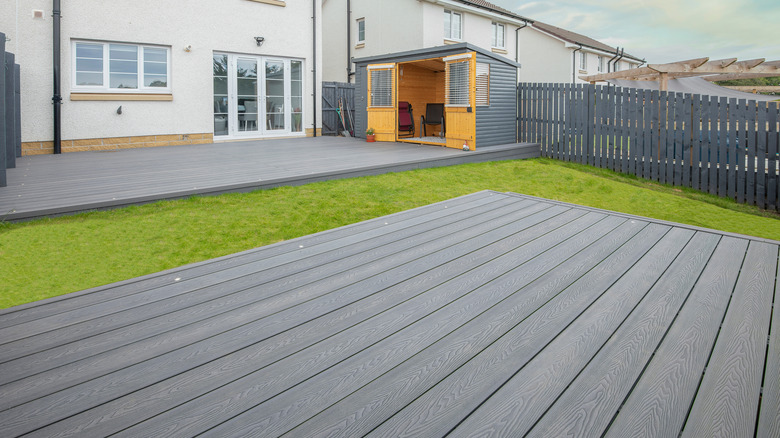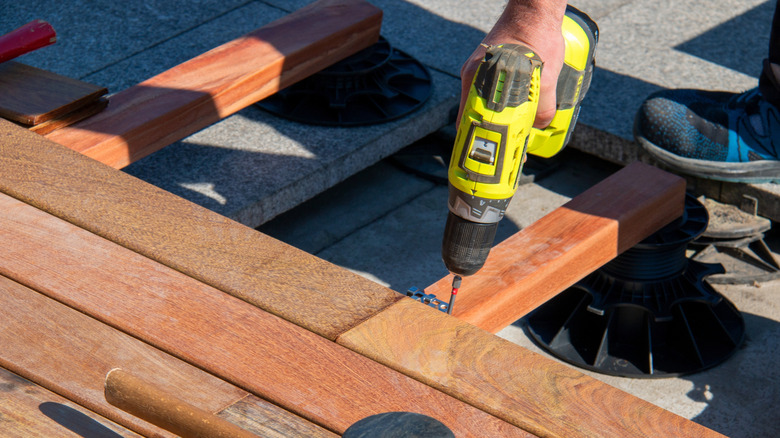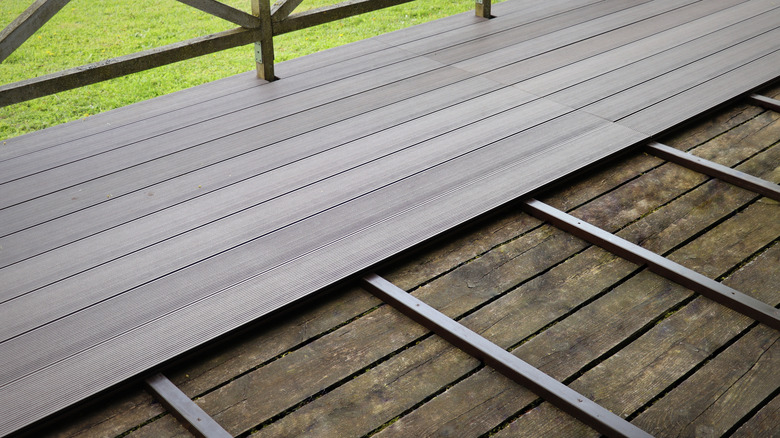Composite Decking Weight Vs. Wood
Choosing the best material for your deck can be something of a minefield, but there are a few facts to fall back on. For example, composite decking is heavier, weaker, and more expensive than traditional wood deck options. The trouble is that, in most ways, it's also better.
How much this matters for your future deck building (or deck re-building) efforts depends on context, of course — your budget, the strength of any existing framing, the deck's environment, your tolerance for future maintenance, and the like. The simple fact that composite boards are 20-30% heavier, or that they're 15-20% more expensive, might not be deciding factors for the average homeowner, either. Budget is budget, of course, and if composite decking is too expensive for yours, that might be the end of the conversation.
However, the weight issue is a more nuanced matter that can have a real effect on the cost of a deck project. At the center of the weight difference is the fact that composite decking is made by combining wood fibers with plastic resins, resulting in a denser product without all the air spaces you find in dry wood. The marketplace has confused matters by introducing hollow products, fully synthetic decking like Owens-Corning's WearDeck, and even aluminum planks. Some are pure plastic, like polystyrene decking and Azek PVC decking, or hybrids like MoistureShield PVC-core composite product. For the sake of clarity, let's just look directly at standard composites versus standard wood options.
How much does wood vs composite decking weigh?
Simplifying questions doesn't always simplify their answers, and so it is when one asks how much composite and wood decks weigh. For traditional composite decking (funny how quickly that turn of phrase became a thing), the answer can be reasonably predictable: Trek composite decking products, for example, all weigh between 1.88 and 2.5 lbs. per linear foot (of 5.5-inch planks; to calculate actual linear feet of 5/4 decking, use our instructions). That is, a 12-inch-long, 1-inch-thick, 5.5-inch deck board weighs no more than 2.5 lbs. It's the wood that brings the confusion here. If you gaze long enough into a lumber grade stamp, you'll see that some is green (S-GRN, or surfaced green) with a moisture content above 19%, some is dry (S-DRY, or surfaced dry) with less than 19% moisture, and some has less than 15% moisture (MC15). Dry wood weighs less. You can use rules of thumb, like those from Engineering Toolbox, to conclude that pressure-treated lumber weighs a little less than most Trek boards, that kiln-dried lumber weighs a lot less, and that green lumber can weigh quite a bit more than composite (keep in mind, though, you'd never build a deck using green lumber.)
There are variables to consider, though. The weight of any board depends on the specific gravity of the wood species as well as its moisture content. After some arcane calculations that take this into account, you should arrive at the actionable conclusion that a one-foot segment of western hemlock/fir decking weighs about 1.03 pounds. That is, it turns out, less than 2.5 lbs., or even 1.88 lbs.
Why the weight of composite vs. wood matters
None of this matters if you and your guests don't mind your deck falling to the ground from time to time. But since that's no way to have a dinner party, you must consider the structural capacity of your framing. And, being heavier, composite decking needs more support. Composite decking has a habit of sagging under load, but that doesn't necessarily result in code differences with wood. The wood decking standard of joists spaced 16 inches on center, or 12 on center for decking laid at a 45-degree angle to the joists generally still applies, for example, but installation guidance varies from product to product. Where the weight's importance really shows itself is in the lifespan of the products. Installing composite decking on framing that isn't in pristine condition can be inadvisable, since the conditions of decrepit wood framing and new composite decking will continue to diverge. Indeed, installing new decking on new wood framing might not be the best idea, because the materials will reach their golden years at different times, and you could find yourself needing to replace floor joists when the decking itself is in near-perfect condition.
The heavier composites aren't to be toyed with. A solution to this problem might be to use composite, steel, aluminum, or another longer-lived framing material. Composite joists should have roughly the same lifespan as composite decking, so everything will start to fall apart at once. But as we point out in our DIY Homeowner's Guide to Deck Building, pressure-treated lumber is nonetheless the framing lumber choice for virtually all decks, regardless of decking material.


